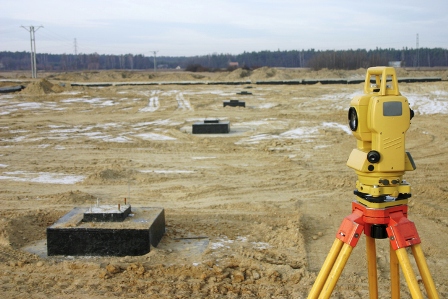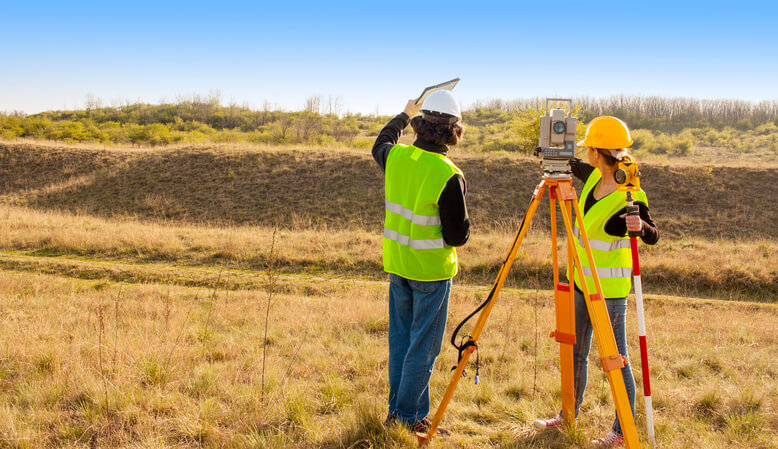Topographic Survey Providers: Elevate Your Job with Accurate Information
Wiki Article
Charting the Training Course: Transforming Surveying Solutions for Enhanced Environmental Preservation and Resource Management
Are you curious about the future of checking solutions and their effect on ecological conservation and source administration? Look no further. This write-up will take you on a trip of development and expedition, as we look into the advancements in surveying technology and strategies that are reinventing the area. Discover how incorporating Geographic Info Solution (GIS) and leveraging remote sensing methods are improving preservation efforts. Join us as we check out the essential duty of surveying experts in driving lasting development and preservation.The Importance of High-Quality Checking in Environmental Preservation
High-grade surveying is essential for efficient ecological preservation and source monitoring. topographic survey. When it pertains to shielding the setting and handling our priceless sources, accurate data is critical. With high-grade surveying, you can collect specific details regarding the land, water bodies, and ecological communities, allowing you to make enlightened choices and take proper actionsBy utilizing premium checking techniques, you can accurately map out the surface, recognize delicate areas, and assess the impact of human tasks. This information is vital for establishing efficient conservation strategies and applying sustainable source management plans. With accurate evaluating, you can check adjustments in the environment in time, permitting you to track fads, recognize possible dangers, and take timely actions to alleviate any type of adverse results.
Additionally, premium surveying helps in the recognition and preservation of important all-natural habitats and biodiversity hotspots (building set out survey). By drawing up these locations precisely, you can secure them from infringement and ensure their long-term survival. Additionally, precise evaluating information help in the identification of ecologically delicate locations, permitting the establishment of protected areas and the application of appropriate conservation actions
Technologies in Checking Innovation for Source Monitoring
You can quickly stay upgraded on the most current advancements in surveying modern technology for far better resource monitoring. As modern technology continues to advance, so does the area of surveying. New strategies and devices are constantly being created to enhance the precision and effectiveness of surveying procedures, eventually bring about a lot more effective source management.Among the essential technologies in checking modern technology is making use of drones. These unmanned airborne cars have actually transformed the means surveys are performed by offering a bird's- eye view of the land. Drones geared up with high-resolution video cameras and LiDAR sensing units can capture thorough images and gather data in a fraction of the moment it would take using traditional surveying methods. This not only conserves time and money yet also enables for even more comprehensive and regular studies, resulting in much better source management.
Another essential advancement is the usage of Geographic Details System (GIS) modern technology. GIS allows surveyors to collect, evaluate, and imagine information in a spatial context. By incorporating information from numerous resources, such as satellite images, airborne photos, and ground studies, GIS makes it possible for land surveyors to develop topographic maps and designs that can be used to make informed decisions about source monitoring.
Integrating Geographic Details Equipment (GIS) in Evaluating for Improved Conservation Efforts
By integrating Geographic Information Systems (GIS) right into your evaluating methods, you can considerably improve your conservation efforts. GIS allows you to gather, examine, and picture spatial information, offering important insights right into the atmosphere and sources. With GIS, you can accurately map and monitor ecosystems, track modifications over time, and identify locations of high preservation worth.One of the essential advantages of using GIS in surveying is the ability to make educated choices based on extensive data. By superimposing different layers of info, such as land use, plants cover, and wild animals habitats, you can determine locations that call for immediate attention for conservation. setting out site engineer. This assists you prioritize your efforts and allot resources a lot more effectively
GIS likewise enables you to team up and share information with other stakeholders included in preservation initiatives. You can conveniently connect your referrals and findings to federal government agencies, charitable companies, and neighborhood neighborhoods, promoting a collective approach in the direction of ecological protection.

Leveraging Remote Sensing Techniques for Environmental Tracking and Evaluating
Leveraging remote picking up strategies boosts the efficiency and accuracy of environmental monitoring and surveying. By utilizing advanced satellite imagery, airborne digital photography, and various other remote picking up modern technologies, you can collect beneficial information concerning the Planet's surface area and its functions without physically existing in the field. This allows you to cover large locations promptly and cost-effectively, conserving both time and sources.With remote noticing, you can acquire high-resolution photos of the environment, enabling you to identify and monitor changes in land cover, plant life wellness, and water bodies. This info is vital for examining the effect of human activities on ecosystems and taking care of natural deposits efficiently. Additionally, remote picking up methods offer valuable understandings into climate patterns, permitting you to examine climate condition, display temperature adjustments, and forecast natural disasters such as cyclones or wildfires.
Additionally, remote noticing can be made use of to monitor and identify contamination sources, track the spread of intrusive species, and examine the quality of air and water. By making use of spectral evaluation, you can determine details contaminants and their resources, assisting to establish strategies for contamination control and avoidance. This modern technology additionally plays a vital duty in wild animals conservation, as it allows you to check animal habitats, track migration patterns, and identify areas of high biodiversity.
The Duty of Surveying Specialists in Sustainable Growth and Conservation
With remote sensing strategies, surveying professionals play an important function in promoting lasting advancement and preservation initiatives. As an evaluating specialist, you are at the forefront of making use of advanced innovation to collect crucial data regarding the setting. Via aerial and satellite imagery, LiDAR, and other remote noticing devices, you have the ability to collect detailed and exact information about land cover, greenery, water resources, and other crucial all-natural attributes.
In collaboration with various other specialists, such as ecological scientists and policymakers, you add to the formulation of lasting growth strategies and conservation methods. Your competence assists in determining prospective conflicts in between advancement and conservation goals, making it possible for stakeholders to make enlightened decisions that balance financial growth with environmental management.
Total, as a checking professional, you have an my company essential role in advertising sustainable development and preservation efforts. Your abilities in remote picking up and data evaluation are necessary in giving the needed information and understandings for effective ecological administration and conservation.
Conclusion
In verdict, evaluating solutions play an essential duty in improving ecological conservation and source monitoring. topographic survey. By making use of innovative modern technologies such as geographic info systems (GIS) and remote sensing methods, evaluating professionals can properly gather data to sustain preservation efforts.Are you interested in the future of evaluating services and their effect on ecological preservation and resource administration? In addition, accurate checking information aids in the identification of environmentally delicate areas, allowing for the facility of safeguarded areas and the implementation of appropriate preservation measures.

In verdict, checking solutions play an important duty in enhancing ecological preservation and resource administration. By making use of innovative modern technologies such as geographical information systems (GIS) and remote noticing strategies, surveying experts can precisely collect information to support preservation initiatives.
Report this wiki page